Wiltshire is well recognized for its Bronze Age barrows, particularly those found inside the World Heritage site of Stonehenge and on the chalklands of Cranborne Chase. In contrast, little is known about similar sites near the medieval city of Salisbury.
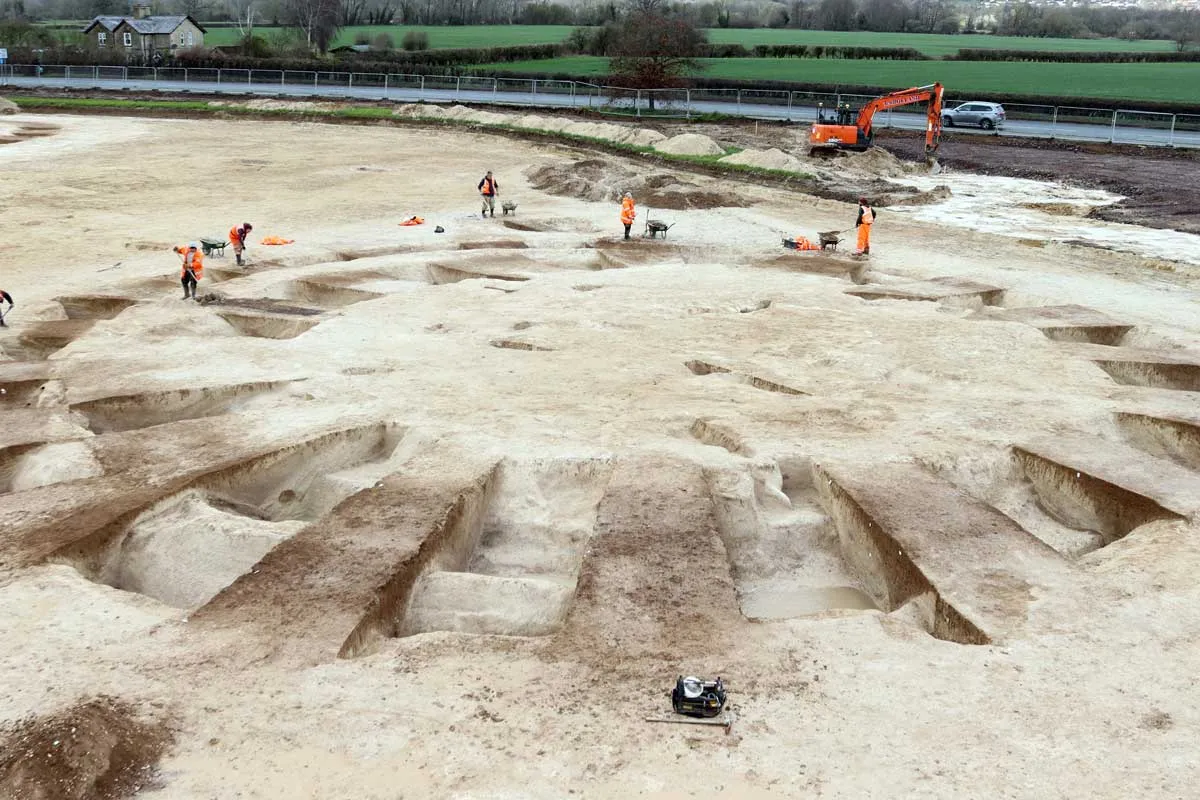
However, Vistry’s construction of a new residential housing complex on the outskirts of Harnham, a southern Salisbury suburb, has allowed unearthing part of the remnants of a huge round barrow cemetery and its landscape setting.
Round barrows were originally formed during the Neolithic period, but the majority were made during the Beaker and Early Bronze Ages (2400 – 1500 BC) and typically consist of a central tomb, a mound, and an enclosing ditch.
Their diameter can range from less than 10m to an astounding 50m, with the majority averaging 20-30m. Their earthworks differ as well, with some having massive central mounds (‘bell barrows’), others having small core mounds and outer banks (‘disc barrows’), and yet others having center hollows (‘pond barrows’).
Their ditches would have produced material for the barrow mound, which would have been constructed of chalk, dirt, and turf. Barrows are typically connected with graves; some include only a single individual, while others have a series of burials and, on rare occasions, several burials.
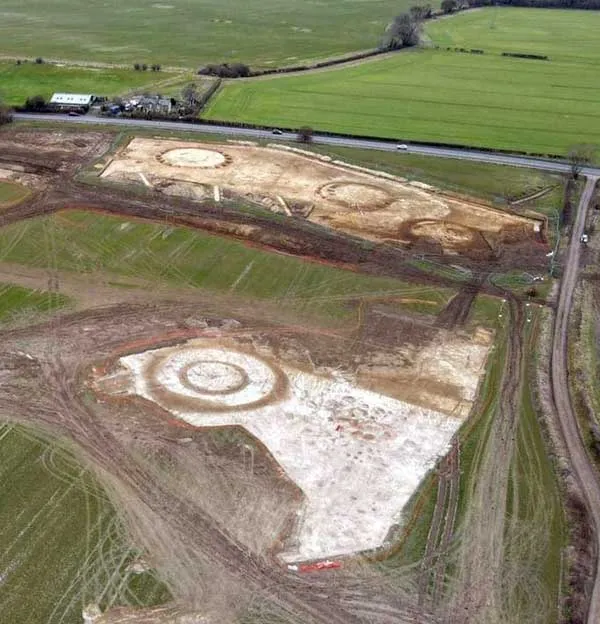
The Netherhampton Road barrows had all been leveled by centuries of farming and are now simply ditches, although eleven burials and three unturned cremations have survived.
The cemetery consists of around twenty or more barrows that extend from the very edge of Harnham on the Nadder valley level, up and across the surrounding chalk hillside on what is the northern limit of Cranborne Chase’s landscape.
Archeologists have only dug five of the cemetery’s barrows, which are organized in small clusters of pairs or groups of six or so. At least three of our barrows have been significantly extended, and one began with a slightly oval ditch that was eventually replaced by a near-circular ditch.
The oval shape suggests that the latter barrow was Neolithic, or was constructed in a Neolithic area. A mass grave at its center contained the skeleton remains of adults and children; such graves are uncommon, and in the lack of grave goods, it will be targeted for radiocarbon dating. The barrow revealed two further tombs, both of which had Beaker burials, which were most likely produced at the beginning of the Bronze Age.
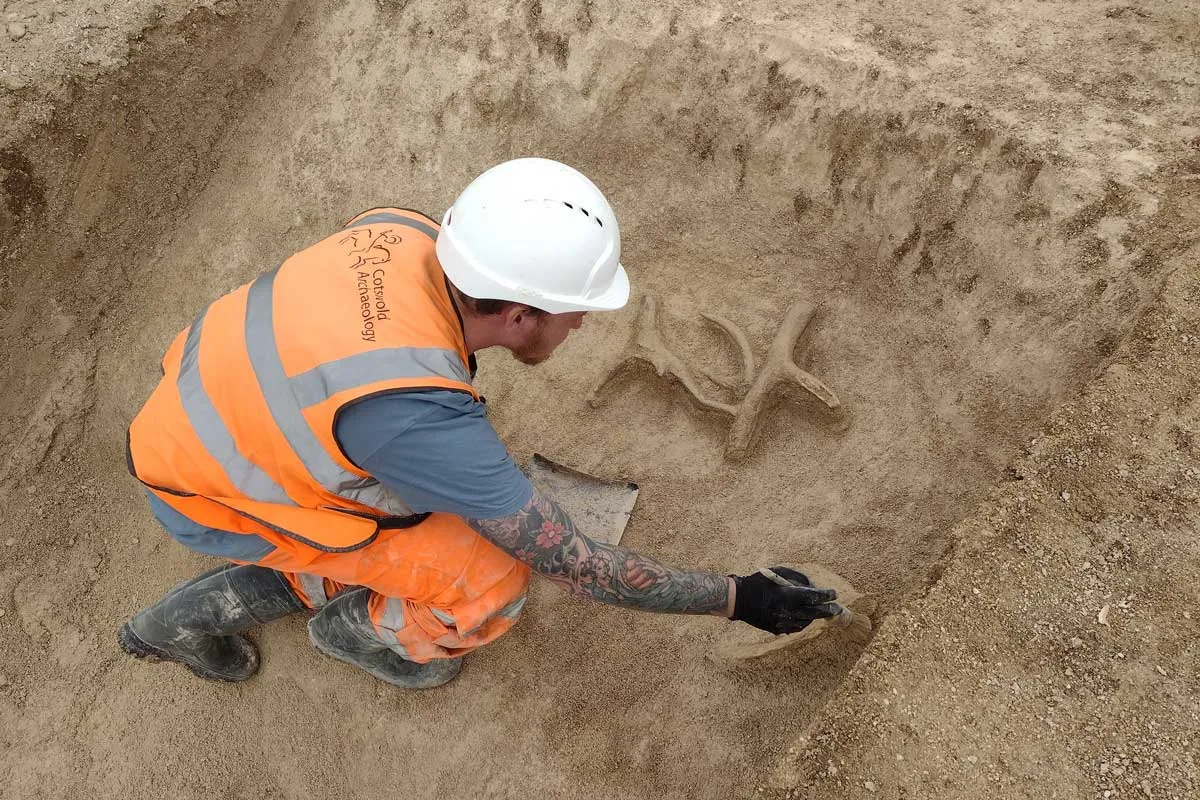
The oval barrow cut through Neolithic pits with red deer antler caches. Deer antler was highly valued and was used to build hand-picks or pitchforks and rakes with straight hardwood handles. It was also fashioned into combs and pins, tools and weapons like mace heads and mattocks, and was used in rituals.
Animal bone and worked bone experts will examine these to see whether there is any obvious evidence of deliberate fracture or wear patterns. These could indicate modifications for usage, such as the burrs and tines being employed for flint knapping, as hammers, or for pressure flaking of flints to form tools.
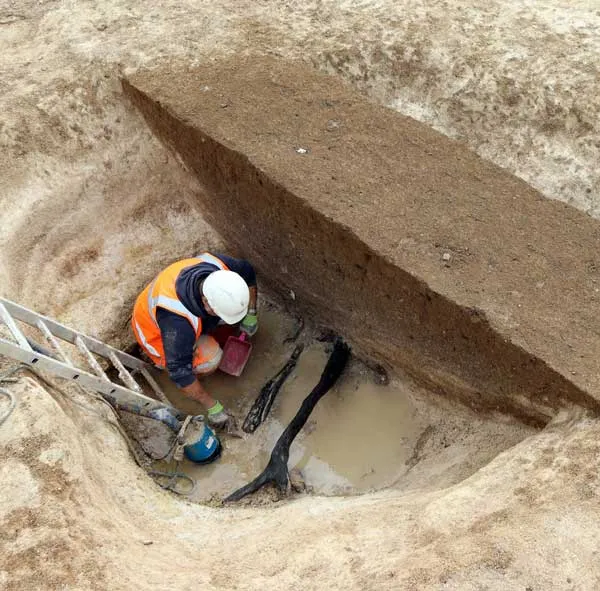
The other two neighboring barrows lacked core tombs, probably as a result of damage caused by centuries of agriculture. These three are part of a wider group of barrows, with three or four others visible as crop marks on the north side of Netherhampton Road.
A potential sunken-featured building – possibly used as a shelter, workshop, or store and a waterhole were also discovered in this part of the site. The researchers uncovered working timbers preserved by waterlogging, as well as Saxon pottery, and iron knife blades, and may be collected Roman ceramics, at the bottom of the waterhole.
The second region revealed a cultivation terrace (‘lynchet’) of possible late Iron Age date, which is quite uncommon in Wiltshire, as well as an area of late Bronze Age to Iron Age settlement with over 240 pits and postholes.
The pits were mostly used for garbage disposal, though some may have been used to store cereal grain; the material recovered from these pits will provide evidence of how this community lived and farmed the land.
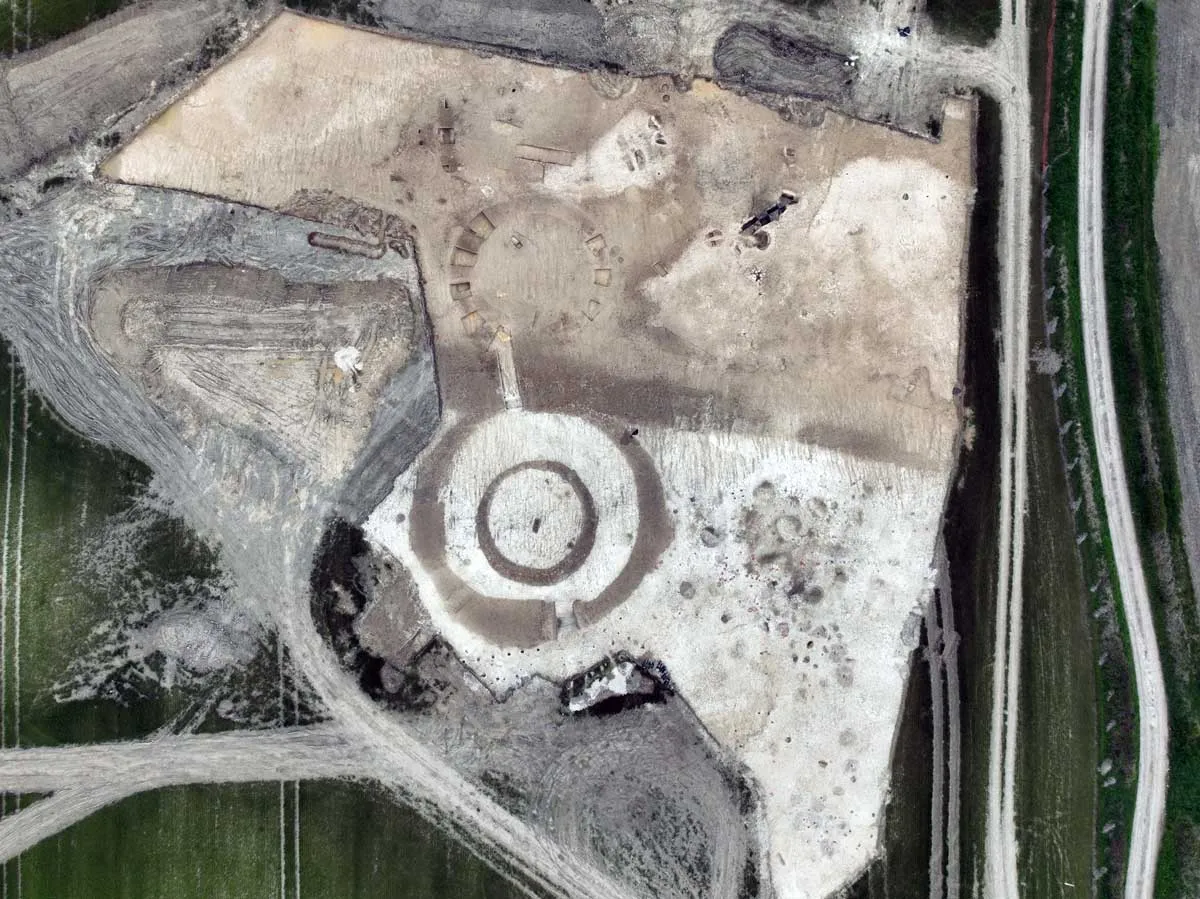
Area 2 is also where archeologists uncovered the remaining barrows. One was a simple ditch carved through an early deposit of hill wash; cremation graves were discovered in and around the ditch.
The other barrow was carved into the chalk and its center was placed on a modest incline, boosting sight from the lower terrain of the River Nadder valley.
At its center was an inhumation burial of a kid, which had been accompanied by a handled Food Vessel of the ‘Yorkshire’ type, so named because of its ridged profile and amount of decoration.
This style of vessel, as the name suggests, is more widespread in northern England and may be an indicator that people moved considerable distances.
The analysis of the skeleton’s isotopes may tell whether the child was born in the area or was raised elsewhere. Certainly, whoever created the pot buried with the kid was familiar with non-local pottery.
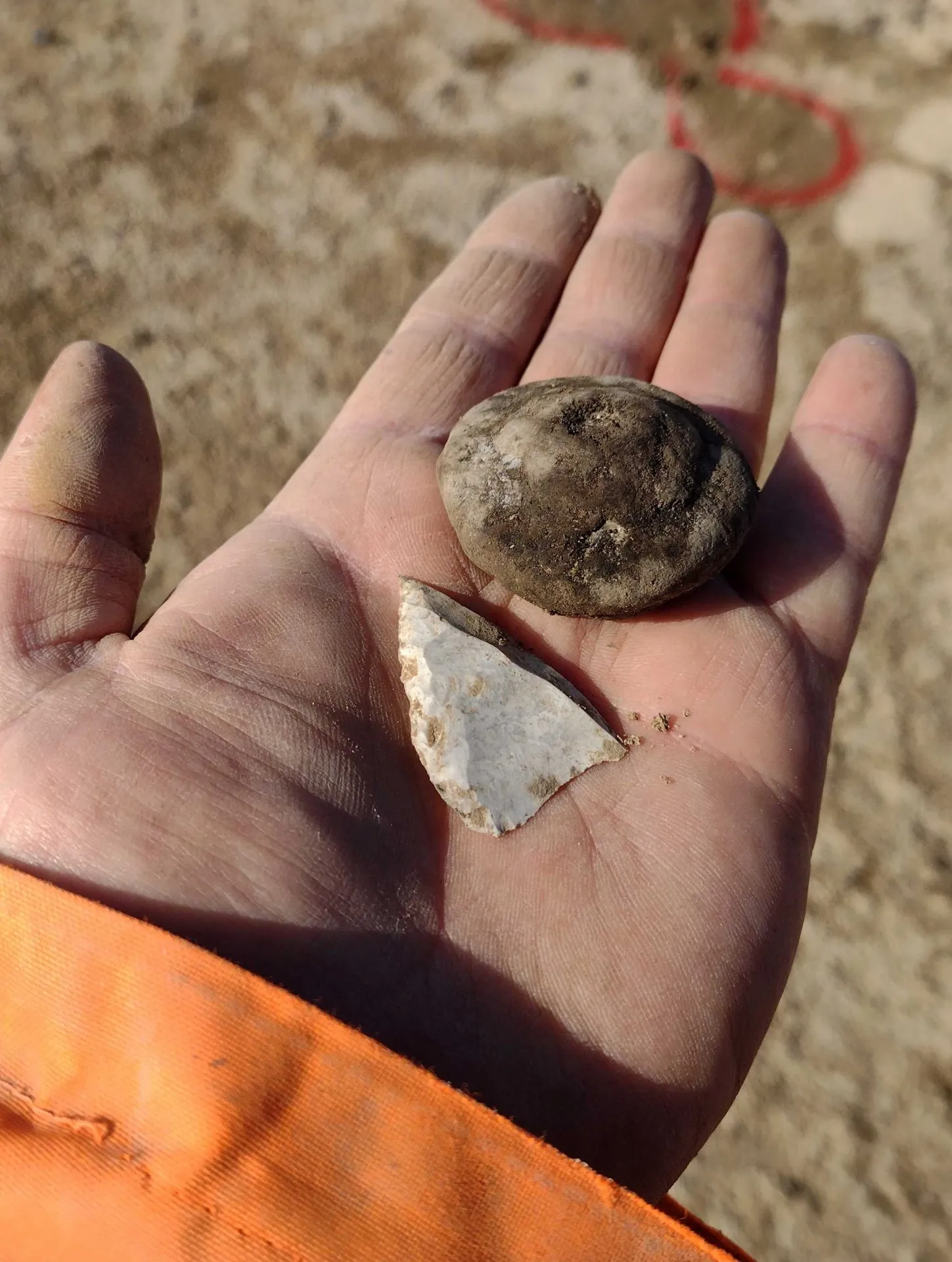
This barrow features cut Neolithic pits containing Grooved Ware pottery, which originated in several towns on Orkney approximately 3000 BC before spreading across Britain and Ireland.
It was also utilized by the builders of Stonehenge and the massive henge enclosures of Durrington Walls and Avebury. These pit deposits frequently contain traces of shattered and burned stuff, the leftovers of feasts, and the odd rare or foreign object.
The Netherhampton pits are no exception, yielding a scallop shell, an intriguing clay ball, a micro denticulate’ – essentially a little flint saw – and three British Oblique arrowheads, which were popular throughout the Late Neolithic period.
When the present excavations are completed, the post-excavation team will begin analyzing and researching the excavated material.
This discovery could potentially shed new light on what life was like in this area during the Bronze Age and how the people lived and interacted with one another. We are excited to see what else is uncovered as archaeologists continue to work on the site.




